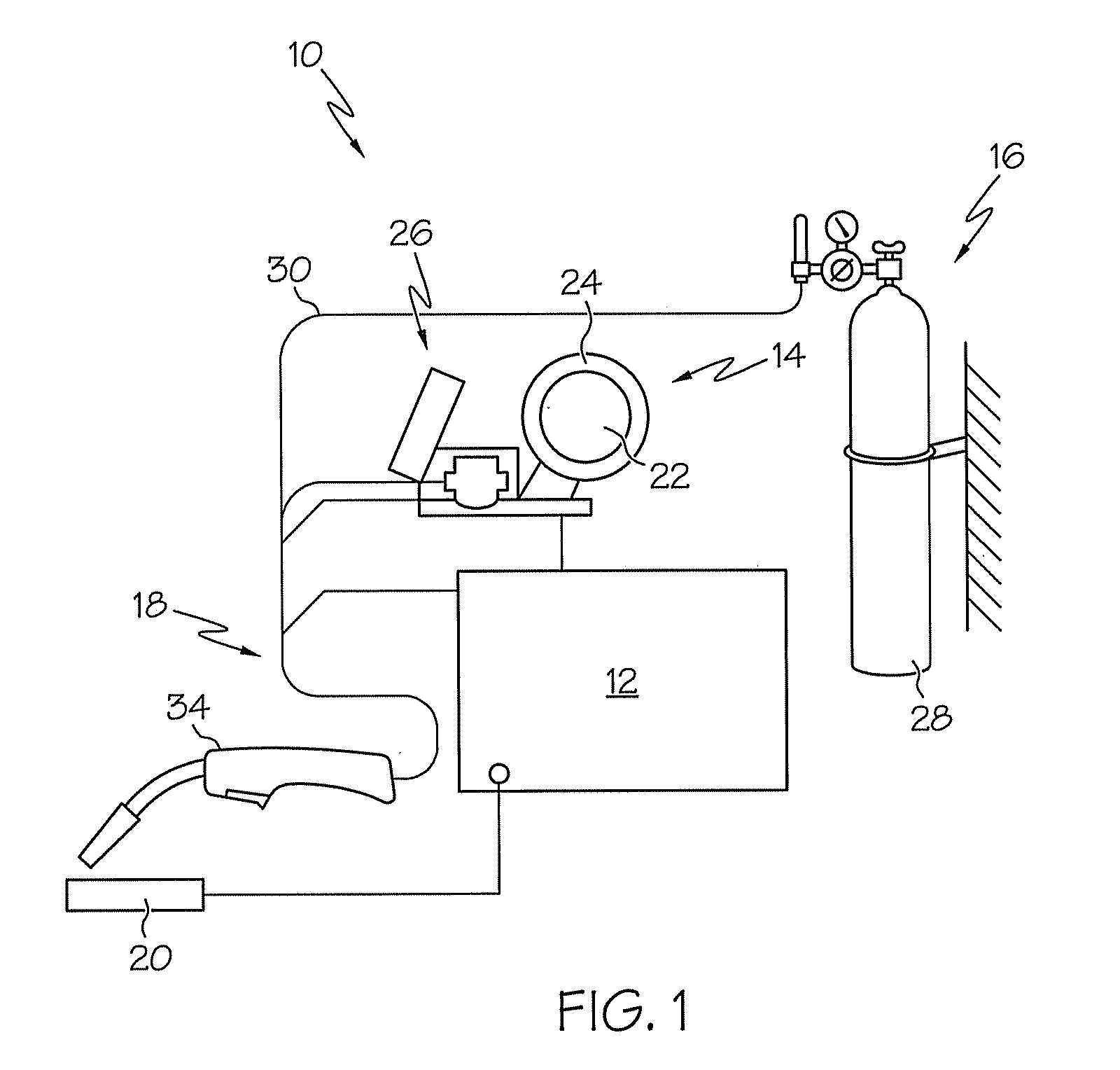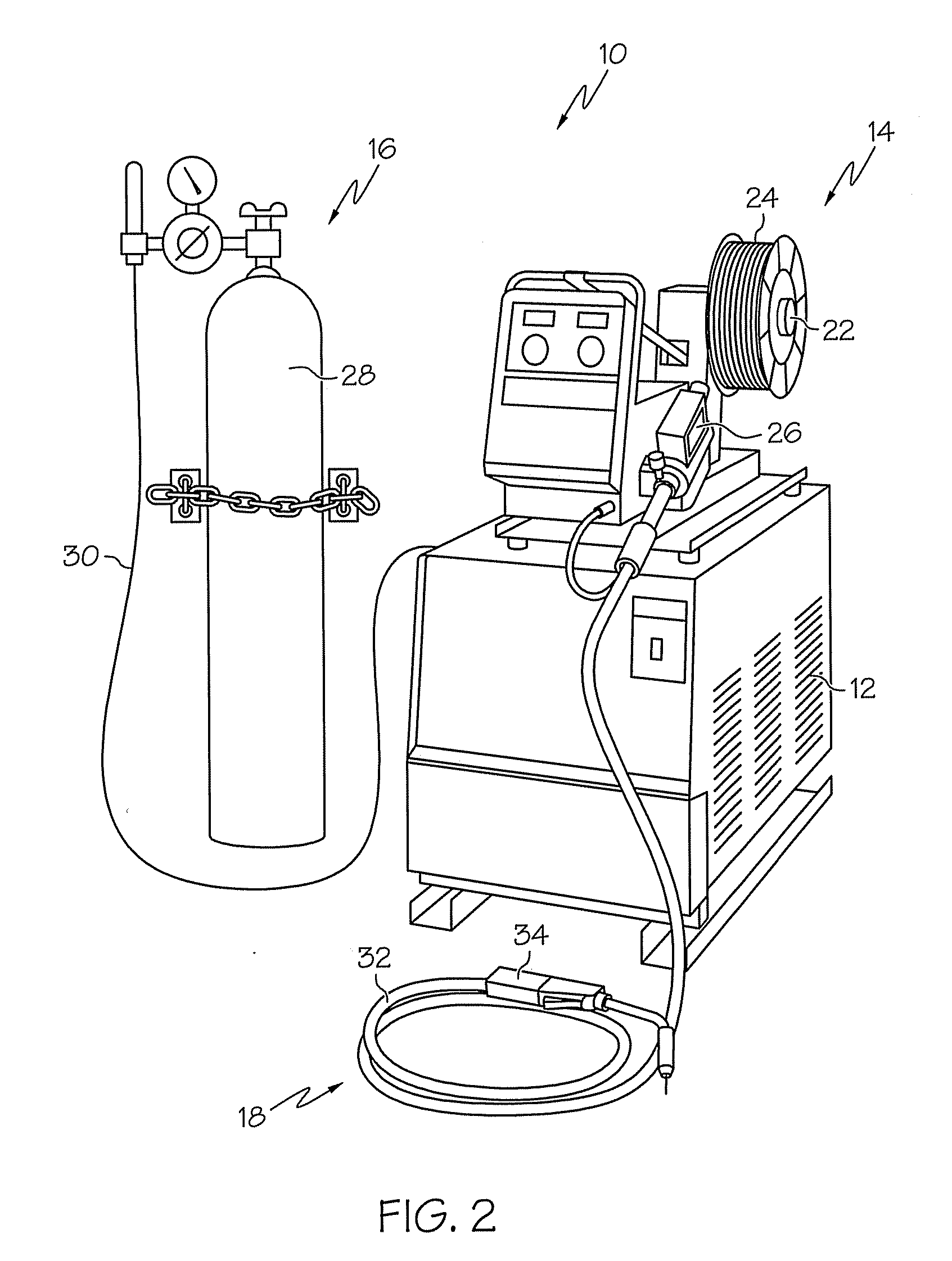Welding wire for submerged arc welding
a welding wire and submerged arc technology, applied in welding/cutting media/materials, welding apparatus, manufacturing tools, etc., can solve the problems of short useful life of the contact tip of the welding gun through which the welding wire passes, and the inability to provide welding wire for the saw system, etc., to achieve the effect of reducing contact tip abrasion wear
- Summary
- Abstract
- Description
- Claims
- Application Information
AI Technical Summary
Benefits of technology
Problems solved by technology
Method used
Image
Examples
examples
[0046]In order to more thoroughly describe this invention, the following working examples were conducted.
[0047]In each example, a 5 / 32 inch (˜4 mm) diameter solid mild steel welding wire was welded in the flat (1F) position above a rotating mild steel pipe (30 inch diameter, 1.5 inch wall thickness). The pipe was rotated at approximately 0.8 rpm, resulting in a welding travel speed of approximately 75 inches per minute. Before welding, the surface of the pipe and the end of the contact tip were separated by a fixed 1.5 inch distance. During welding, the welding wire was fed at approximately 120 inches per minute, resulting in a welding current of approximately 1150 Amps. Welding voltage was held constant at 39 Volts. Lincolnweld 761 SAW flux was used for all welding trials.
[0048]All wires were welded for at least one hour. The contact tip wear associated with each wire was quantified by measuring the percent area increase of the contact tip bore through which the welding wire was fe...
PUM
| Property | Measurement | Unit |
|---|---|---|
| diameter | aaaaa | aaaaa |
| particle size | aaaaa | aaaaa |
| diameter | aaaaa | aaaaa |
Abstract
Description
Claims
Application Information
 Login to View More
Login to View More - R&D
- Intellectual Property
- Life Sciences
- Materials
- Tech Scout
- Unparalleled Data Quality
- Higher Quality Content
- 60% Fewer Hallucinations
Browse by: Latest US Patents, China's latest patents, Technical Efficacy Thesaurus, Application Domain, Technology Topic, Popular Technical Reports.
© 2025 PatSnap. All rights reserved.Legal|Privacy policy|Modern Slavery Act Transparency Statement|Sitemap|About US| Contact US: help@patsnap.com



